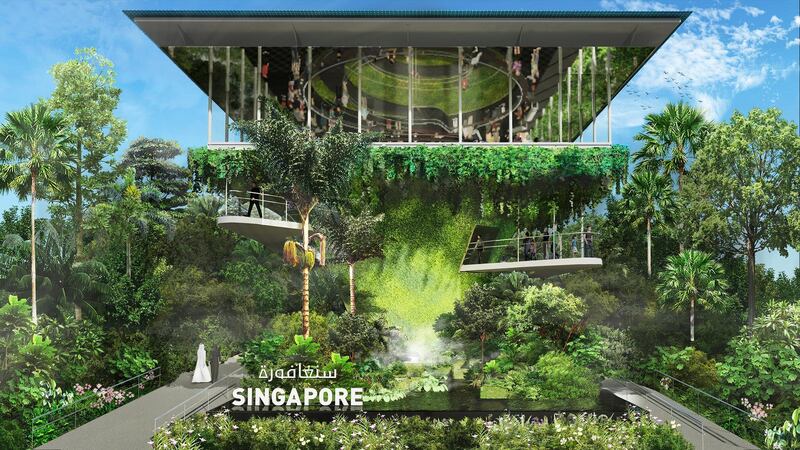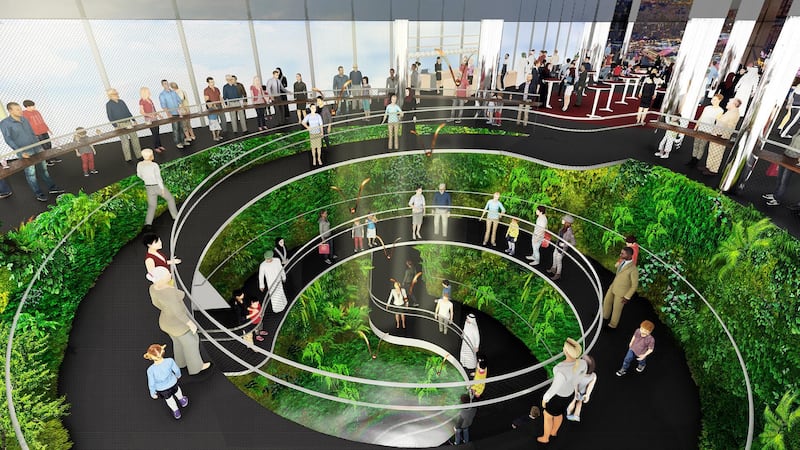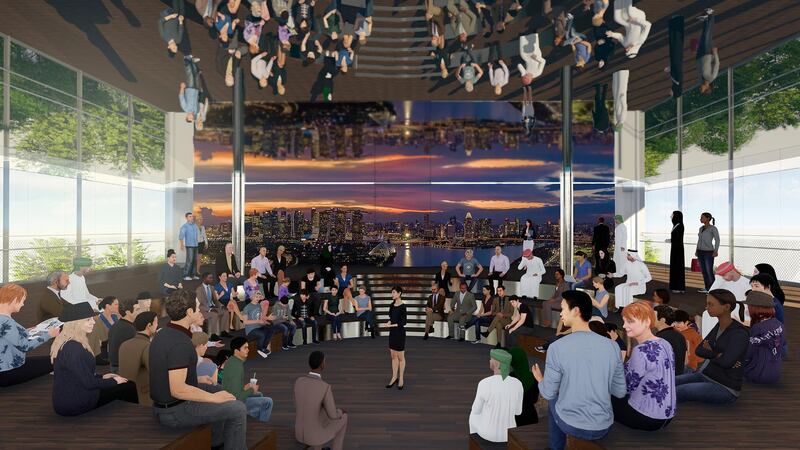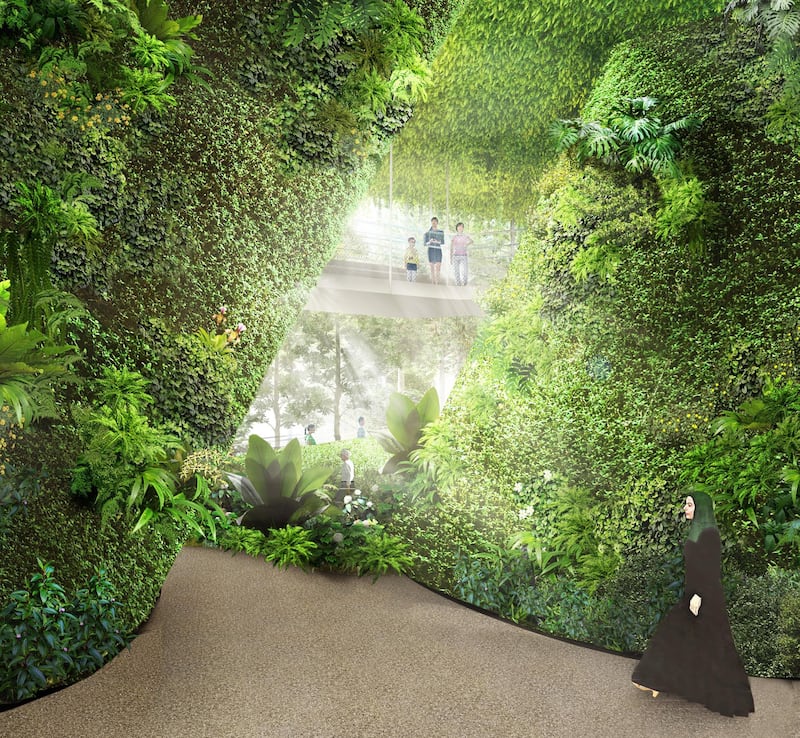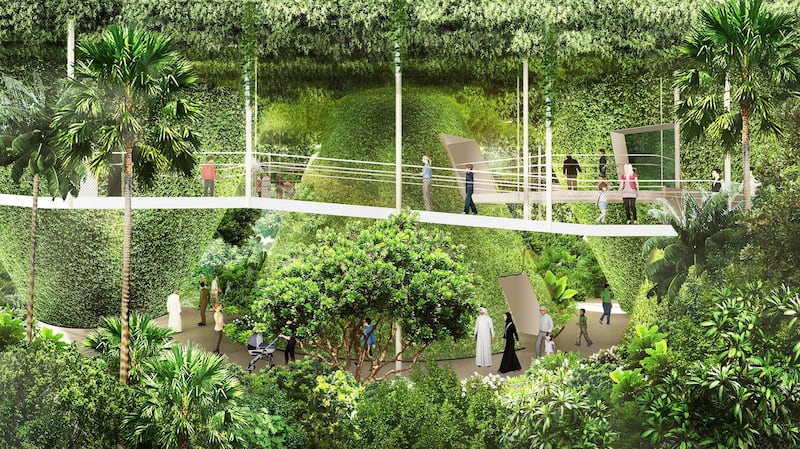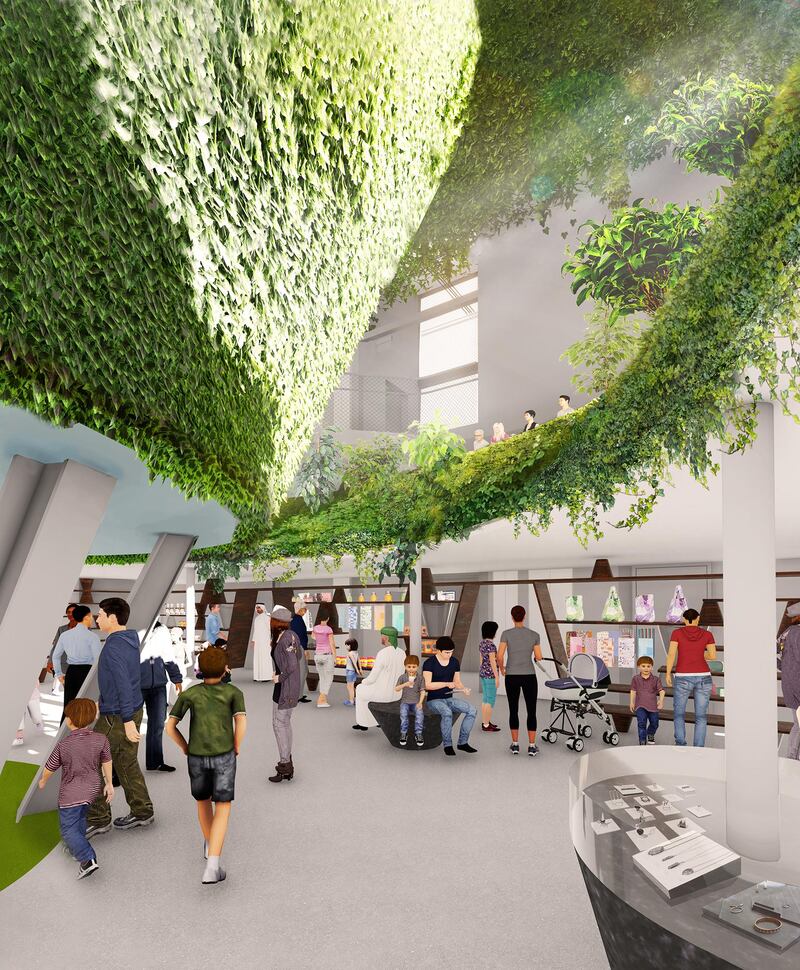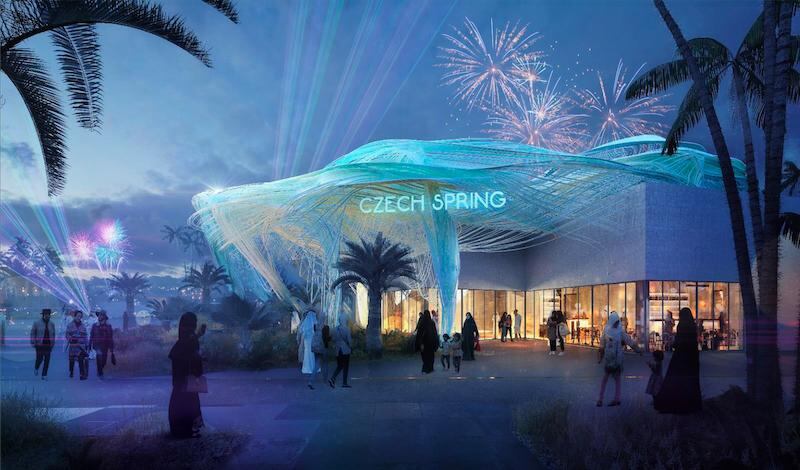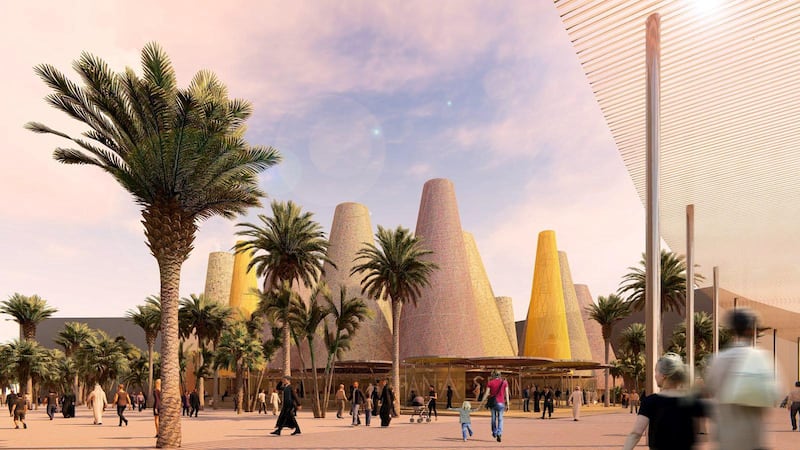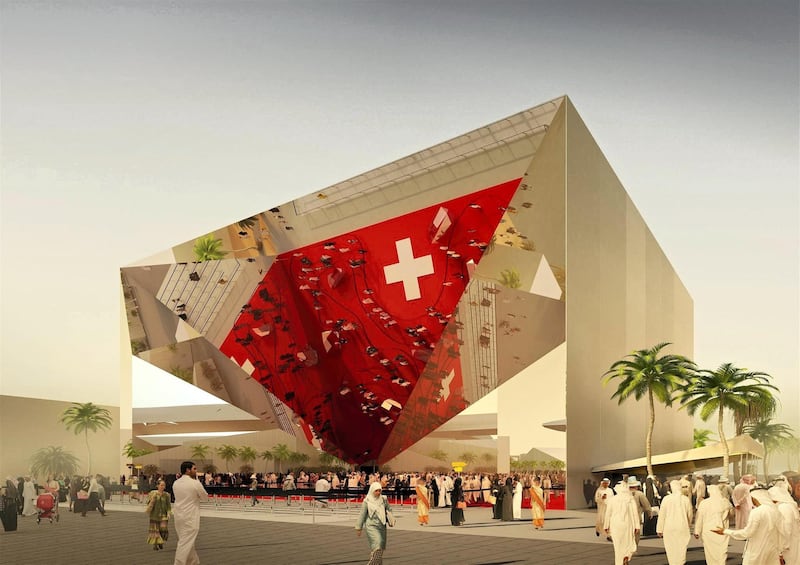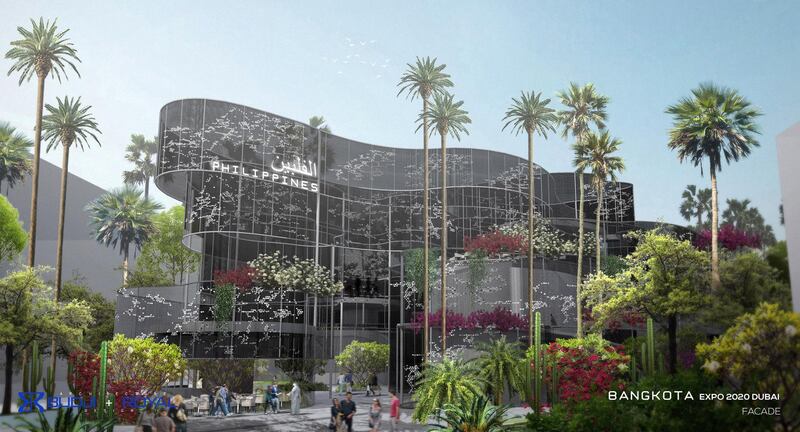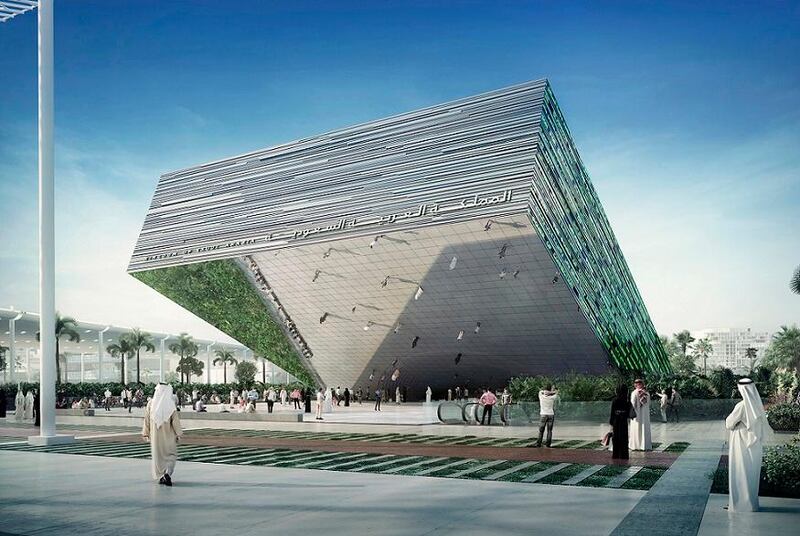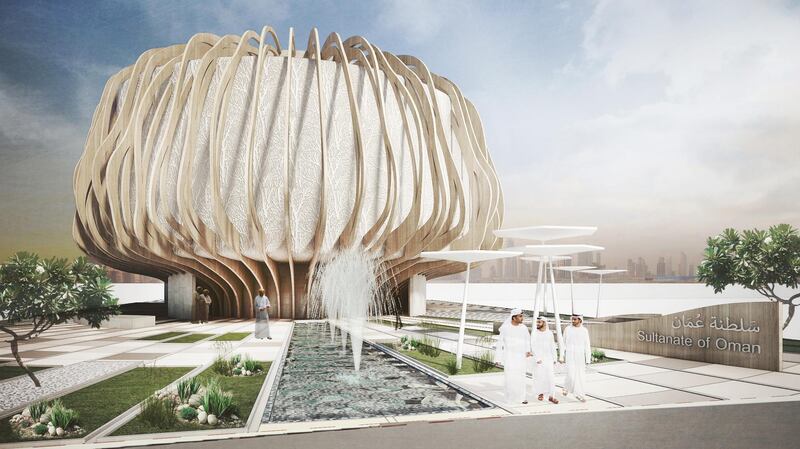Set on a small plot at Dubai Expo 2020, Singapore's pavilion aims to make a big impact with hanging gardens, exotic flowers and edible plants.
The city-state unveiled its pavilion on Tuesday and, with its well-ventilated spaces surrounded by lush greenery, assured visitors it would be a safe place to visit during the pandemic.
Built on 1,550 square metres – among the smallest plots at the Expo – the structure is designed to integrate greenery and show that buildings do not have to displace nature.
Larry Ng, commissioner general of the Singapore pavilion, said that despite Covid-19, he hoped people could meet at the world fair.
“We did not expect this but it is something we have to face," Mr Ng said.
"For me, I’m very optimistic. I hope Expo 2020 will be one important platform for people to celebrate meeting up physically. Although I really don’t know what will happen by then, Expo and many of the pavilions have started to engage with the world virtually."
The pavilion's planners are keen to show how nature can thrive in a limited space.
Visitors will walk into a garden on the lower level, which features a pond filled with plants that suck pollutants from the air.
An artist's impression of Singapore pavilion at Expo 2020 Dubai
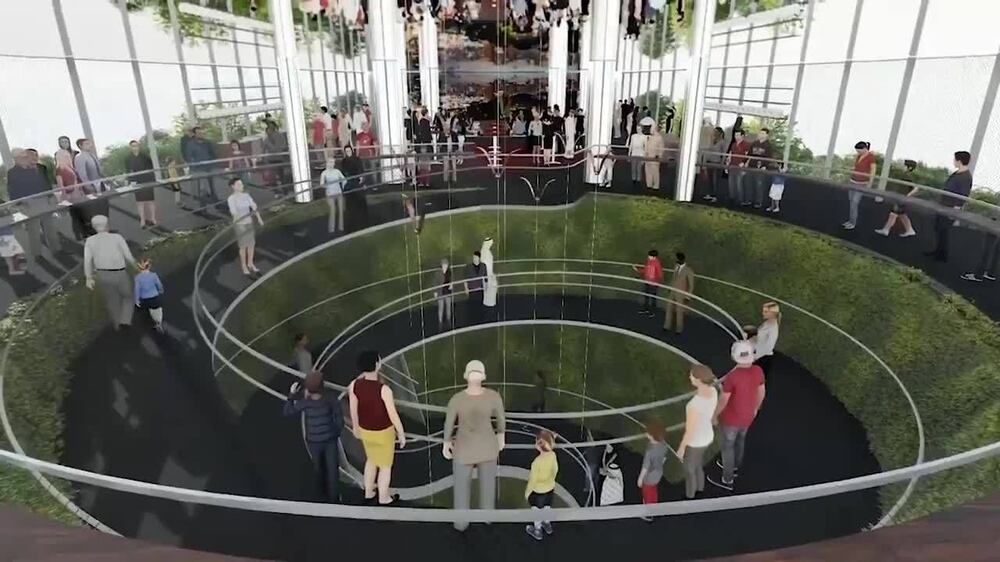
A gently sloping walkway will then guide people past hanging gardens, planters that cover the ceiling, thick vines and edible plants that cover three nine-metre cones.
Orchids from Singapore and date palms from the desert are among the foliage, which will also display exotic flowers named after famous people.
More than 500 solar panels will cover the roof to meet all the pavilion's energy demands and act as a sunshade.
Trees planted along the pavilion border will cut off direct sunlight and offer protection from strong desert winds.
Dry mist fans placed throughout the building will help to lower the temperature, despite a lack of air-conditioning.
Mr Ng said he hoped the pavilion would spark discussion about smart urban solutions, climate change and sustainability in a post-Covid-19 world.
"Recently, because of the Delta variant, people are looking at the issue of ventilation," he said, referring to the highly contagious strain of the coronavirus first identified in India.
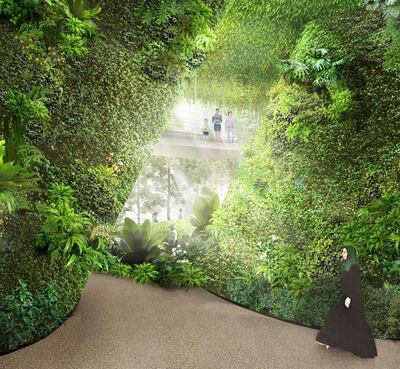
“Right in the beginning, the Singapore pavilion was designed to be fully ventilated and that is a big plus.
“It is a green oasis so if you are tired, you can come over, take a rest and take a walk. When you feel the heat, come over to our tropical forest.”
There are plans for robots to interact with visitors. Details will be released later.
Net-zero energy goals will be met during the six-month event, with solar power used to desalinate groundwater that will be used for irrigation and to create a mist effect.
An automated machine called the ecodigester will convert food waste into clean, odourless wastewater that can be recycled.
Sun pipes will capture sunshine from the roof and funnel it to spots in the interior that have low natural light.
“The world is facing some of the most challenging realities of its time and we are reminded that we can and should come together to find a way forward by building cities that sensitively adapt to tomorrow’s challenges,” Mr Ng said.
“Singapore may be small in terms of physical size but the impact we can make will increase multi-fold if we join other nations in efforts to address these pressing issues.”
Known as a garden city, Singapore has ambitions to extend its green cover by 2030 and the pavilion will echo the country’s plan to build nature into its architecture.
Wong Mun Summ, founder of Woha, the architectural firm that designed the pavilion, said the structure intended to make a big impression.
“The dense, multi-layered green space makes the most of its small size,” Mr Wong said.
“We all realise with the pandemic that being in an open space is better than in a closed environment. This is highly suited for the current situation.
“You will see rainforest plants and what is spectacular is the vertical greenery that Singapore is well known for.”
Mothers with prams and people in wheelchairs can reach the top floor via the walkway. This zone will host workshops, talks and movie screenings about life in the country.
Chefs from some of the city's most famous restaurants and street stalls will serve traditional coffee and snacks, including tapioca, green bean fritters, traditional chicken and beef satay.
Expo 2020 Dubai is ready to welcome visitors from October 1 to March 31.
